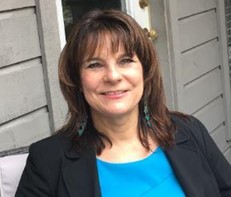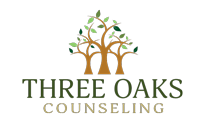Stage 1 – Experimental Use
You learn that when a substance is used, your mood will move in the direction of euphoria. There are usually no serious negative consequences. You learn to control the degree of the mood swing by adjusting the quantity used. You return to a normal state after use.
Stage 2 – Seeking the Mood Swing: Social Use and Intentional Misuse
You start to develop self-imposed rules such as “I will only use on the weekends” or “I will wait till after 5:00 PM”. You may have some physical consequences (hangover). Some people can stay at this stage for a lifetime (social users). You continue to move in the direction of euphoria and back to a normal state.
Stage 3 – Preoccupation with Mood Swing-Harmful Dependency and Impaired control
You are starting to lose control in this stage, which will progress if you continue to use. You may begin to feel emotional pain as you go against your value systems. You start to develop denial as you minimize and rationalize your use. You may see your lifestyle change as the substance starts to take over more and more. Rules that you set in Stage 2 are broken and your safety diminishes. You start to increase your use and tolerance sets in. You need to increase amounts to get the same desired effect. You start to have blackouts and your attempts to control your use fail. Major areas of your life are negatively impacted as problems become more crisis-driven with a higher sense of urgency. You start to experience family problems, problems at school or work, legal problems, medical complications, and/or psychological problems. Your mood has now shifted from a normal state to a state of emotional pain.
Stage 4 – Using to Feel Normal
Now you are using to function, but you continue to return to a state of emotional pain. The cycle of addiction begins to spiral further out of control. In a sense, you are getting “trapped by your own drug”. You started using it to feel good but ended up needing it just to not feel bad. Crises becomes common including jails, institutions, or early death.
Facts about Addiction
Addiction is a brain disease
There are cellular and molecular changes in brain structure and function. It involves functional changes to brain circuits involved in reward, stress, and self-control. There is compulsive use despite serious negative consequences. The earlier the drug exposure or trauma to the brain, the greater the damage. Cognitive deficits include memory problems, impaired abstraction, failed problem-solving strategies, and loss of impulse control.
Dopamine
All drugs of abuse release the pleasure neurotransmitter dopamine to our brain. It is the first chemical at the heart of a pleasurable experience and at the heart of all reinforcing experiences. It signals how important a behavior is to survival. It is responsible for euphoric recall and tells the brain “this is better than expected”.
Glutamate
Glutamate is a brain neurotransmitter critical in short and long-term memory. More recently, it has been realized that glutamate also contributes to the development and maintenance of addiction. Glutamate plays a role in the reinforcement of cravings and relapse. It initiates drug seeking via cue-induced cravings (triggers) and is one of the most frequent causes of relapse, even after long periods of abstinence.
Addiction is Primary
Addiction does not cause psychiatric or emotional problems. This classifies addiction as a “primary disease”, meaning addiction is not the result of some other situation, problem or health issue. For example, addiction is not caused by a difficult childhood, poor finances, or even depression. Even though addiction did not cause these issues, it is important that it coincide with treatment for them.
Addiction is Chronic
A disorder that is chronic, occurs for a long time, maybe forever. The opposite of chronic is “acute” which means relatively sudden and short. Some acute disorders include the flu, food poisoning, and a concussion. Chronic disorders include diabetes, hypertension, and addiction.
Addiction is Progressive
Addiction tends to get worse over time. Consequences worsen and tolerance develops (use more to gain desired effect). Spend more, hide more, and use more.
Addiction is incurable but treatable
Some biological changes involved in addiction tend to be permanent. Once one has crossed the line into addiction (stage 3) there is a high probability that they will not be able to safely use the drug of abuse again. For example, an alcoholic will never be able to “drink normally”.
What if I just quit?
Post-Acute Withdrawal Symptoms (PAWS)
Sudden abstinence can have negative results at first. Among them are:
- Inability to think clearly. Difficulty Concentrating, rigid repetitive thinking, Impairment in abstract thinking.
- Memory Problems: Both short and long-term memory loss can occur.
- Emotional overreactions or numbness: mood swings can also occur.
- Sleep disturbances: Abnormal sleep patterns, nightmares, using dreams.
- Physical coordination problems: Trouble with balance, slowed reflexes, lack of hand/eye coordination, dizziness.
- Stress sensitivity: Difficulty managing stress and stress can intensify other symptoms of PAWS. Can increase the likelihood of relapse.
Acute Alcohol Withdrawal (AWS) can also occur when abruptly stopping alcohol intake. This can result in significant illness or even death.
What does Recovery look like?
Structures and Schedules
Adding structure and schedules to your life will help eliminate avoidable triggers. It also reinforces the concept of “one day at a time”. Knowing what comes next throughout the day reduces your anxiety and flies in the face of the “drug-using lifestyle”. This structure will also provide the basic foundation for your ongoing recovery.
Balanced Lifestyle
You will work on developing a balance between work, sleep, leisure, recovery activities, relationships, health and wellness, and spirituality.
Lifestyle/relationship Changes
You will give form to the main ingredients for your new lifestyle and for your relationships. These may include:
- Meditation
- Recovery reading
- Time with your higher power
- Going for a walk
- Healthy eating and exercise
- Consistent sleep/wake times
- No electronics before bedtime
- Attend support meetings regularly (12-step, SMART, church)
You will surround yourself with healthy, sober people who support your recovery and you will connect with at least one recovering person each day. In early recovery, it is recommended to attend 90 meetings in the first 90 days following a detox or discharge from a treatment program. Remember to include fun in recovery. Explore ways to have fun that does not involve your addiction.
Healed Past Relationships
This includes the relationship you have with yourself. This is your time for growth and healing. Make amends, get into individual and/or family counseling, address past trauma that may interfere with recovery efforts.
Signs of Relapse are Monitored
The addicted brain attempts to make up excuses or reasons to justify a relapse. Have a relapse prevention plan in writing (on your phone preferably so you always have it with you) that includes things you can do to manage an urge, craving or trigger. Remember that isolation and recovery do not go together. Letting someone safe know you are struggling is an essential part of the recovery process and one of the top coping strategies. Working daily with a sponsor can decrease the likelihood of relapse. Remember, that you are in relapse mode long before you take that first drink or drug.
Acceptance that Recovery is a Lifelong Process
A relapse does not mean that you have failed. Get back on track by letting others know and again surround yourself with recovery. It is not a success-only journey. The addiction wants to keep you isolated and alone. Reach out for support immediately because you cannot do this on your own. You deserve support.
Although addiction is a complex disease and sometimes resistant to treatment, millions of people are in recovery every day. The important thing is to remember that you do not have to do it alone. Reaching out for help can be scary but taking healthy risks to “get unstuck” is vital to your recovery. Finding a therapist experienced in addiction can amplify what you may already be doing for your recovery efforts. Plus it provides the individual attention to delve into unresolved issues from the past and present that may be interfering with your ability to maintain abstinence.

Linda Mikesic, LCSW, LCDC, SAP
Linda Mikesic is a licensed therapist at Three Oaks Counseling & Psychiatry Group in Georgetown.

